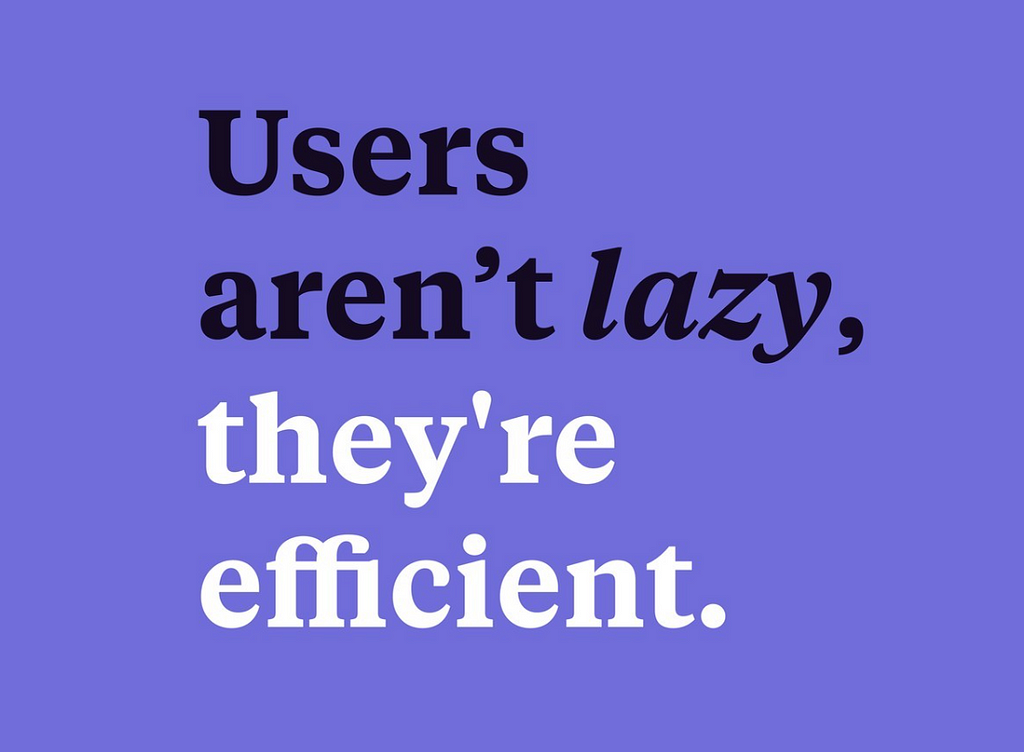Users don’t work hard enough to discover how to use your design in the intended manner. Bad user!” — It’s a sentiment often expressed in the realm of User Experience Design (UXD). But what if we were to flip the narrative? What if, instead of labeling users as lazy, we see them as astute navigators, strategically managing their time and interests in the intricate web of digital interfaces? The reality is, users aren’t neglecting the effort required to comprehend a design; rather, they are efficient beings, behaving in a way evolution has finely tuned into human nature.

The Evolutionary Perspective:
Embedded in the fabric of human survival is an age-old pursuit of efficiency. Our ancestors, in a world where survival depended on judicious resource management, could ill afford to expend energy on unnecessary endeavors. This legacy is imprinted in our modern psyche. Therefore, when users seemingly opt for shortcuts or swift solutions, it’s not indicative of laziness; it’s an adaptive response shaped by millennia of evolution.
Prioritizing Time and Interests:
In today’s digital labyrinth, users find themselves amidst a cacophony of information and choices. Far from being lazy, their deft navigation through interfaces is a testament to a judicious allocation of resources. Acknowledging the time constraints of users leading busy lives is imperative for UX designers. Integrating this understanding into design processes allows for the creation of experiences that not only meet users’ needs but resonate with their priorities, fostering lasting engagement and satisfaction.
Blame the Design, Not the User:
The perception of lazy users often stems from challenges users face in navigating interfaces. However, instead of pointing fingers, designers should see these instances as invaluable feedback for improvement. Is the interface genuinely intuitive? Are instructions effortlessly comprehensible? Designers bear the responsibility of guiding users through their journey, understanding that unconventional methods often signal design gaps rather than user apathy.
The Myth of the Lazy User:
Let’s discard the outdated notion of lazy users. Users aren’t disinterested; they are efficient navigators seeking streamlined experiences. By adapting methodologies to align with users’ intrinsic behaviors, designers can craft interfaces that elevate natural inclinations. Understanding and appreciating users’ evolutionary predispositions paves the way for a UX that feels intuitive and harmonious, moving beyond stereotypes to empower users through thoughtful, user-centric design.
Conclusion:
Embrace users as masters of efficiency, not lazy. Prioritize user-centric design, acknowledging their time constraints. Discard the myth of lazy users; it’s an opportunity for refinement. See users as partners in co-creating digital experiences. The future of UX lies in understanding, collaboration, and exceeding user expectations.
Unveiling the Myth: Users Aren’t Lazy was originally published in UX Planet on Medium, where people are continuing the conversation by highlighting and responding to this story.